Hi! Back in April, I started a thread about my stinky flue. I got some very helpful people responding, but it became clear that I had left some info out, plus pics were requested. I meant to just update that thread, but I got sidelined due to multiple family emergencies. So, here's a brand new thread, where I'm hoping the experts here can help me finally resolve this.
Feel free to read the original thread for details, here. Otherwise, here's a brief summary. We bought the house about a year ago. At the time we had multiple sweeps inspect the chimney. We had a crack in the mortar cap sealed, sealant sprayed on the brick, and we removed a gas line that a previous owner had used to put a gas display inside the fireplace. Also, before we ever even burned, we had a radon fan installed under the foundation.
During our first winter of burning, we didn't have much trouble. The wood we bought was wet because we bought it during a storm and it had been stored outside. Winter was wet and cold, so it never really dried off. We'd get some smoke coming in from the fireplace while starting a new fire, but once the fire was hot enough, no trouble. We would then dry off the next few logs next to the fire, and again, no trouble. We also had some smoke come out of the blower vents, but this stopped when we stuffed insulation into the gap between the front edge of the metal firebox liner (one guy called it a "heatilator?") and the front brick wall of the fireplace. Oh, and we had some smoke get sucked into the basement during the first burn, because there is a second chimney that goes down to the basement, but the wood stove was removed long before we moved in. We sealed up the holes in the wall and that has never been an issue again. Both chimneys have rain caps.
In January, we stopped burning and had a sweep clean the chimney. He said it was pretty clean to begin with. He looked at our wood, because I was nervous about how wet it was. He said he agreed it was seasoned fine but just got wet from being outside before we bought it.
Throughout January, we occasionally got smell from the fireplace. I tried taping aluminum foil across the entire fireplace door. That helped with the smell, but it made so much noise from getting sucked in and out by the air coming in/out through the drafty damper, that we couldn't stand it. So, I taped aluminum foil across the top of the flue and plugged the bottom with a homemade chimney "balloon" (trash bag stuffed with insulation). I also vacuumed every speck of ash that I could out of the firebox, plus I found a TON of ash/loose gunk in the smoke shelf that the sweep had supposedly "cleaned." No problems with smell again until mid-April.
In mid-February, we had weatherization work done on the house. This included additional attic insulation, caulking the windows, door sweeps, etc., plus a small, always-on exhaust fan in the basement. We still didn't have any problems until a month after this work was done.
Finally, in mid-April, we woke up to the house smelling like "Satan's butt-hole." It was just the thickest, stankiest, nastiest fireplace smell I've ever encountered. We tried all the troubleshooting we found online, but we couldn't get it to change by cracking windows, turning appliances off/on, etc. We called some sweeps.
The first sweep first blamed it all on our flue being too short, causing the prevailing wind to come across our roof and straight down the flu. I pointed out that the flue had been completely sealed with the foil, so he changed his mind and said that he could see water literally trickling down inside of the flu. He also said he could see efflorescence in there. He showed me a picture (attached), but I didn't see any of what he was describing. He also said that mortar chimney caps are absolutely not acceptable and that I would need a steel cap immediately.
The next two sweeps disagreed with almost everything the first guy said. They said that the mortar cap could be replaced if I wanted, but that it looked like the crack had been repaired just fine. They said that there is always some dampness that soaks in through the bricks/tiles, and that I had caused this to build up and compound by sealing both ends of the flu. One recommended either an insert or at least an airtight door, while the other said to just put kitty litter in there to soak up the smell (which didn't help at all). A fourth sweep couldn't come out, but he talked a lot over the phone and basically agreed that I messed up by plugging the flue completely, and he recommended an insert. All the sweeps said that there is no magic bullet, as there's nothing obviously wrong with the chimney, other than my stupid sealing method. Oh, and one guy said the ash dump, which has been plugged with decades of compacted ash since we moved in, needs to be cleaned out and bricked off, but the others said there's no way it could be making any smell.
I also talked to weatherization people, HVAC people, etc. They all agreed that the radon fan and the exhaust fan create such a tiny amount of suction that there's no way they could be responsible for this (plus I know the radon fan was running the entire year before this started). They also said that my house isn't tight enough to warrant an air exchange and that it couldn't help with this. This was told to me after the final inspection and blower door test, so I feel like they must know what they're talking about. This doesn't mean there isn't a draft issue (there obviously is), but I take them at their word that an exchange and/or removing the fans won't fix it. Edit: Also, I tried turning the exhausts off for over a month, and it made no difference at all.
While going through the first thread discussion, I found that if I burned candles in the fireplace, the smell almost completely disappeared (but only while burning). As the days got hotter and more humid (I'm in the Midwest), I would have to burn more and more candles. Finally, the chimney balloon I ordered arrived. It has definitely helped reduce the smell, but the smell is still there. It's worse than when I had candles burning, but still a tiny fraction of what we originally encountered. Edit: I've also noticed that the smell still fluctuates drastically based on the weather. Hotter and more humid days result in a thicker smell that radiates further from the fireplace, while cooler, dryer days result in very little odor.
So, now my plan is to either get an insert+SS liner, or to get a Lyemance top-damper, airtight fireplace door, and gas loglighter.
I'm leaning toward the insert+liner. However, I worry that because we still never identified the one "thing" that is wrong with the flu, I'll spend thousands of dollars on a bunch of work but still end up having the same problem.
What can I do further to ensure that I've identified the problem and that an insert/liner will fix it?
Would you recommend the airtight door instead of the insert? Why?
If I go with an insert and liner, what details do I need to pay attention to in order to make sure all the work is done and all the accessories added to ensure a stink-free home?
What other information do you need from me to help resolve this?
I can't tell you how desperate we are to just get this fixed, and I'm ever so grateful for any help to get it fixed the RIGHT WAY. Thanks!
Oh, and I tried uploading a "media album" with descriptions of my pics, but it said that a moderator had to approve it before I could add it to this thread. So, I've attached the pics directly for now.
EDIT: I forgot to make this point: in the first thread, the last few comments are from people saying they think I'm dealing with an issue of negative pressure and moisture in the flu.
I think there's no denying this, based on the symptoms. I didn't make this thread because I discount/disbelieve/don't value their input. I made this thread because I'm hoping that, with the pics and additional info I've given, we might be able to more accurately identify the causes of these issues and ensure that whatever work I have done will actually make a difference.
So, I guess what I mean is, I'm hoping here to fine tune and build upon the great advice already given. I'm not trying to throw away what others already said and start over.
Feel free to read the original thread for details, here. Otherwise, here's a brief summary. We bought the house about a year ago. At the time we had multiple sweeps inspect the chimney. We had a crack in the mortar cap sealed, sealant sprayed on the brick, and we removed a gas line that a previous owner had used to put a gas display inside the fireplace. Also, before we ever even burned, we had a radon fan installed under the foundation.
During our first winter of burning, we didn't have much trouble. The wood we bought was wet because we bought it during a storm and it had been stored outside. Winter was wet and cold, so it never really dried off. We'd get some smoke coming in from the fireplace while starting a new fire, but once the fire was hot enough, no trouble. We would then dry off the next few logs next to the fire, and again, no trouble. We also had some smoke come out of the blower vents, but this stopped when we stuffed insulation into the gap between the front edge of the metal firebox liner (one guy called it a "heatilator?") and the front brick wall of the fireplace. Oh, and we had some smoke get sucked into the basement during the first burn, because there is a second chimney that goes down to the basement, but the wood stove was removed long before we moved in. We sealed up the holes in the wall and that has never been an issue again. Both chimneys have rain caps.
In January, we stopped burning and had a sweep clean the chimney. He said it was pretty clean to begin with. He looked at our wood, because I was nervous about how wet it was. He said he agreed it was seasoned fine but just got wet from being outside before we bought it.
Throughout January, we occasionally got smell from the fireplace. I tried taping aluminum foil across the entire fireplace door. That helped with the smell, but it made so much noise from getting sucked in and out by the air coming in/out through the drafty damper, that we couldn't stand it. So, I taped aluminum foil across the top of the flue and plugged the bottom with a homemade chimney "balloon" (trash bag stuffed with insulation). I also vacuumed every speck of ash that I could out of the firebox, plus I found a TON of ash/loose gunk in the smoke shelf that the sweep had supposedly "cleaned." No problems with smell again until mid-April.
In mid-February, we had weatherization work done on the house. This included additional attic insulation, caulking the windows, door sweeps, etc., plus a small, always-on exhaust fan in the basement. We still didn't have any problems until a month after this work was done.
Finally, in mid-April, we woke up to the house smelling like "Satan's butt-hole." It was just the thickest, stankiest, nastiest fireplace smell I've ever encountered. We tried all the troubleshooting we found online, but we couldn't get it to change by cracking windows, turning appliances off/on, etc. We called some sweeps.
The first sweep first blamed it all on our flue being too short, causing the prevailing wind to come across our roof and straight down the flu. I pointed out that the flue had been completely sealed with the foil, so he changed his mind and said that he could see water literally trickling down inside of the flu. He also said he could see efflorescence in there. He showed me a picture (attached), but I didn't see any of what he was describing. He also said that mortar chimney caps are absolutely not acceptable and that I would need a steel cap immediately.
The next two sweeps disagreed with almost everything the first guy said. They said that the mortar cap could be replaced if I wanted, but that it looked like the crack had been repaired just fine. They said that there is always some dampness that soaks in through the bricks/tiles, and that I had caused this to build up and compound by sealing both ends of the flu. One recommended either an insert or at least an airtight door, while the other said to just put kitty litter in there to soak up the smell (which didn't help at all). A fourth sweep couldn't come out, but he talked a lot over the phone and basically agreed that I messed up by plugging the flue completely, and he recommended an insert. All the sweeps said that there is no magic bullet, as there's nothing obviously wrong with the chimney, other than my stupid sealing method. Oh, and one guy said the ash dump, which has been plugged with decades of compacted ash since we moved in, needs to be cleaned out and bricked off, but the others said there's no way it could be making any smell.
I also talked to weatherization people, HVAC people, etc. They all agreed that the radon fan and the exhaust fan create such a tiny amount of suction that there's no way they could be responsible for this (plus I know the radon fan was running the entire year before this started). They also said that my house isn't tight enough to warrant an air exchange and that it couldn't help with this. This was told to me after the final inspection and blower door test, so I feel like they must know what they're talking about. This doesn't mean there isn't a draft issue (there obviously is), but I take them at their word that an exchange and/or removing the fans won't fix it. Edit: Also, I tried turning the exhausts off for over a month, and it made no difference at all.
While going through the first thread discussion, I found that if I burned candles in the fireplace, the smell almost completely disappeared (but only while burning). As the days got hotter and more humid (I'm in the Midwest), I would have to burn more and more candles. Finally, the chimney balloon I ordered arrived. It has definitely helped reduce the smell, but the smell is still there. It's worse than when I had candles burning, but still a tiny fraction of what we originally encountered. Edit: I've also noticed that the smell still fluctuates drastically based on the weather. Hotter and more humid days result in a thicker smell that radiates further from the fireplace, while cooler, dryer days result in very little odor.
So, now my plan is to either get an insert+SS liner, or to get a Lyemance top-damper, airtight fireplace door, and gas loglighter.
I'm leaning toward the insert+liner. However, I worry that because we still never identified the one "thing" that is wrong with the flu, I'll spend thousands of dollars on a bunch of work but still end up having the same problem.
What can I do further to ensure that I've identified the problem and that an insert/liner will fix it?
Would you recommend the airtight door instead of the insert? Why?
If I go with an insert and liner, what details do I need to pay attention to in order to make sure all the work is done and all the accessories added to ensure a stink-free home?
What other information do you need from me to help resolve this?
I can't tell you how desperate we are to just get this fixed, and I'm ever so grateful for any help to get it fixed the RIGHT WAY. Thanks!
Oh, and I tried uploading a "media album" with descriptions of my pics, but it said that a moderator had to approve it before I could add it to this thread. So, I've attached the pics directly for now.
EDIT: I forgot to make this point: in the first thread, the last few comments are from people saying they think I'm dealing with an issue of negative pressure and moisture in the flu.
I think there's no denying this, based on the symptoms. I didn't make this thread because I discount/disbelieve/don't value their input. I made this thread because I'm hoping that, with the pics and additional info I've given, we might be able to more accurately identify the causes of these issues and ensure that whatever work I have done will actually make a difference.
So, I guess what I mean is, I'm hoping here to fine tune and build upon the great advice already given. I'm not trying to throw away what others already said and start over.
Attachments
-
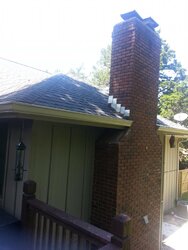 20160609_140539.jpg104.5 KB · Views: 683
20160609_140539.jpg104.5 KB · Views: 683 -
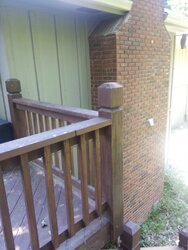 20160609_140553.jpg104.1 KB · Views: 698
20160609_140553.jpg104.1 KB · Views: 698 -
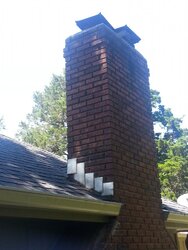 20160609_140608.jpg110.8 KB · Views: 661
20160609_140608.jpg110.8 KB · Views: 661 -
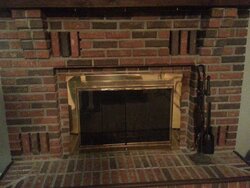 20160609_135416.jpg187.1 KB · Views: 2,266
20160609_135416.jpg187.1 KB · Views: 2,266 -
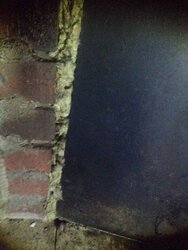 20160609_135644.jpg135.1 KB · Views: 721
20160609_135644.jpg135.1 KB · Views: 721 -
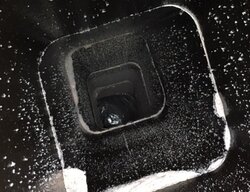 IMG_7146.JPG29.9 KB · Views: 755
IMG_7146.JPG29.9 KB · Views: 755 -
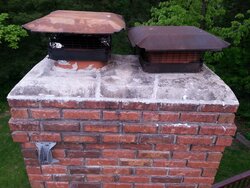 20160501_185842.jpg237.4 KB · Views: 746
20160501_185842.jpg237.4 KB · Views: 746 -
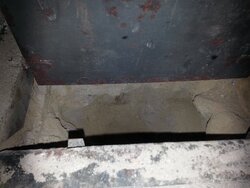 20160126_115902.jpg141.7 KB · Views: 708
20160126_115902.jpg141.7 KB · Views: 708 -
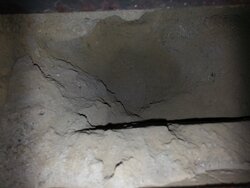 20160126_115858.jpg113.8 KB · Views: 713
20160126_115858.jpg113.8 KB · Views: 713 -
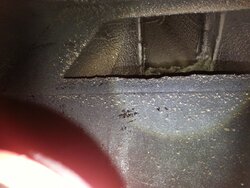 20160126_115118.jpg226.3 KB · Views: 656
20160126_115118.jpg226.3 KB · Views: 656
Last edited:


